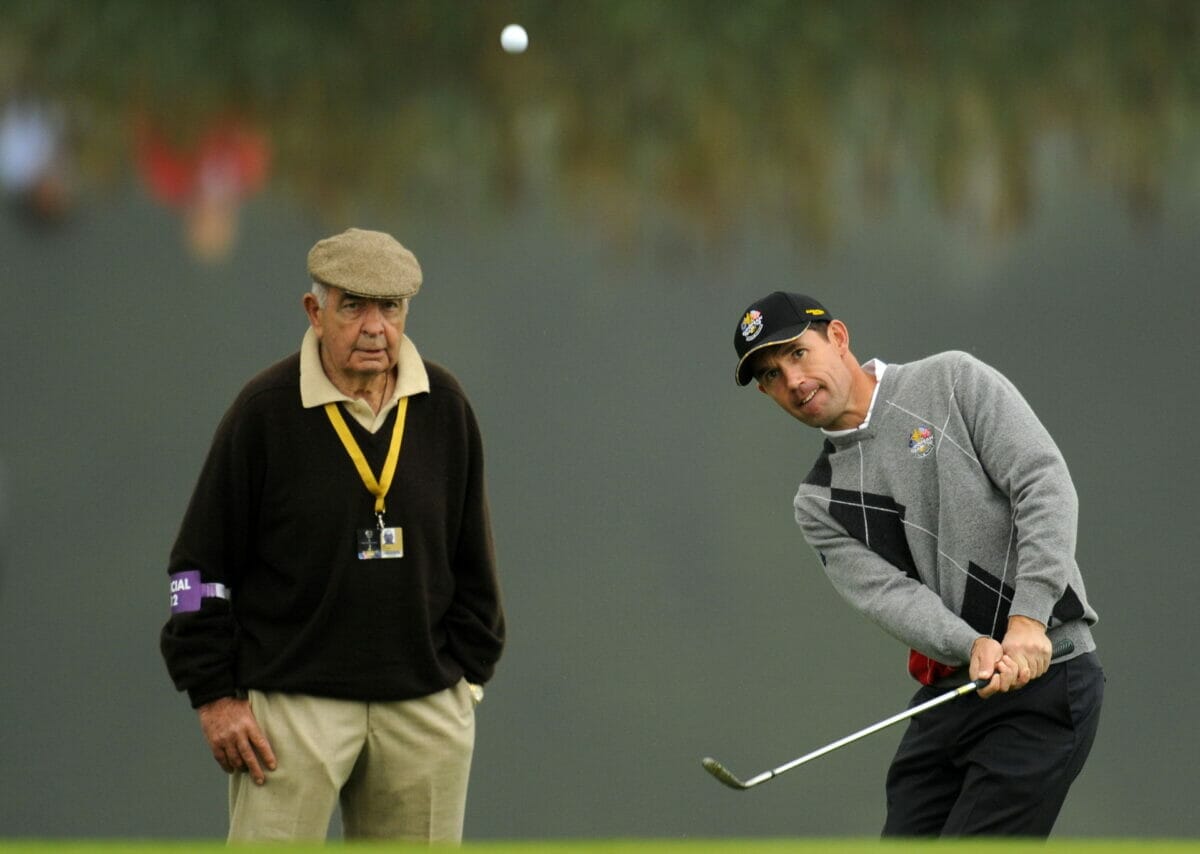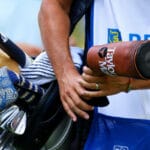Too many golfers don’t bother to practice because they don’t enjoy it. I have always loved practicing. Watching the ball fly and commanding it to do what I want is thrilling. But, if you want to improve, the best way to practice is on the golf course, playing on your own and hitting two or three balls whenever you can.
Hitting a whole bunch of shots with one club at the same target until you feel you have ‘grooved’ your swing is a waste of time and effort. Repetition may be the mother of knowledge in other spheres, but it is no way to master the random intricacies of playing golf. You may toil away hitting 7-irons until the strike becomes clean and true and you feel like you have it down ‘pat’ but such a concentrated practice schedule is woefully ineffective. One poor 7-iron on the course and all your hard work is in vain.
Golfers don’t seem to want to learn how to play by feel anymore. All they want to know about is ‘going after the ball’ with all out power – but you also need finesse to be an effective player.
Too many golfers have no feel on short shots – a poor set up and the lack of consistent and continual practice makes short, ‘no power’ swings undependable. That’s why I like to finish my practice sessions with a few half-power shots with different clubs. On full shots and high swing speeds you can get away with a bad set up and bad swing mechanics up to a point, but you won’t when playing a finesse shot. It’s probably why we are usually better off to ‘club down’ and whack the ball hard when under pressure.
I like to hit the same club at different targets and different clubs at the same target. The objective was to develop ‘feel’ and control over my swing speed. Hitting a lob wedge 130-yards is fun (if you can manage it) but hitting the same club, or any club, 30-yards is more important – especially when the hole is 30-yards away.
Good technique on short shots can be carried over to the big shots. A dysfunctional engine will stall at low throttle but a finely tuned one will keep purring away. Hitting drivers and 3-irons at half speed to targets 150-yards away is a fantastic way to practice. If you have a major swing fault you simply cannot do half-power swings.
The disadvantage of repetition is after a while our brains switch off and aren’t as receptive. What the brain responds to is change, challenge and danger. We might feel like that 13th consecutive 7-iron felt pretty good, but we’re still not learning as effectively as we could. Where’s the challenge, where’s the danger unless you’re playing a version of golf that requires you to hit 13 consecutive 7-irons under exactly the same conditions? You’ll never have to do that in a real situation.
Far better to adopt a “random practice schedule” and make the brain adapt and re-adapt naturally by constantly switching clubs and playing at different targets. Hitting a bunch of shots with one particular club is good exercise but it is not how golf is played.























Leave a comment